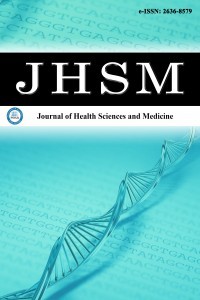1.
Barber SL, van Gool K, Wise S, et al. Pricing long-term care for older persons. World Health Organization. 2021.
2.
Kislaya I, Santos AJ, Gil AP. Co-occurrence of different types of violence in Portuguese elder adults. Comprehensiv Psychiatr. 2013;49:113-120.
3.
Buz S. Yaşlı bireylere yönelik yaş ayrımcılığı. Elektr Sos Bil Derg. 2016; 14(53):268-278.
4.
Nezlek JB, Forestell CA. Food neophobiaand the five-factor model of personality. Food Quality Preference. 2019;73:210-214.
5.
de Andrade Previato HDR, Behrens JH. Taste-related factors and food neophobia: Are they associated with nutritional status and teenagers’ food choices? Nutrition. 2017;42:23-29.
6.
Pliner P, Salvy S. Food neophobia in humans. Front Nutrit Sci. 2006;3:75-90.
7.
Black JM, Hawks JH. Medical surgical nursing: clinical management for positive outcomes (8<sup>th</sup> ed.). USA: Saunders Elsevier Company. 2009;653-726.
8.
Werth BL, Williams KA, Pont LG. A longitudinal study of constipation and laxative use in a community dwelling elderly population. Arch Gerontol Geriatr. 2015;60(3):418-424.
9.
Gallagher PF, Mahony DO, Quigley EMM. Management of chronic constipation in elderly. Drugs Aging. 2008;25(10):807-821.
10.
Selçuk H. Malnütrisyon ve önemi. Güncel Gastroenterol. 2012;16(2):158-162.
11.
Bauer JM, Kaiser MJ, Anthony P, et al. The Mini Nutritional Assessment: Its history, today’s practice, and future perspectives. Nutrit Clin Pract. 2008;23(4):388-396.
12.
Camina-Martín MA, De Mateo-Silleras B, Malafarina V, et al. Nutritional status assessment in geriatrics: Consensus declaration by the Spanish society of geriatrics and gerontology nutrition workgroup. Maturitas. 2015;81(3):414-419.
13.
Hoca M, Türker PF. Kıbrıs Gazimağusa’da yaşayan yaşlı bireylerin beslenme alışkanlıkları, beslenme durumları ve yaşam kalitesinin değerlendirilmesi. Beslenme Diyet Derg. 2017;45(1):44-52.
14.
Cai L, Liu A, Zhang Y, Wang P. Waist-to-height ratio and cardiovascular risk factors among Chinese adults in Beijing. Plos One. 2013;8(7):e69298.
15.
Duman E, Akçil-Ok M, Keser A. Besin neofobisi ölçeğinin Türkçeye uyarlanması: geçerlik ve güvenirlik çalışması. Kocaeli Üni Sağ Bil Derg. 2020;6(2):157-161.
16.
Uçar ME. Yetişkin bireylerde yeni besin korkusu ve diyetin kalitesinin değerlendirilmesi. (Yüksek Lisans Tezi, Hacettepe Üniversitesi Sağlık Bilimleri Enstitüsü). 2018.
17.
Gençel M. Gıda neofobisi düzeyinin yiyecek seçim faktörleri ile ilişkisi (Yüksek Lisans Tezi, Kocaeli Üniversitesi Sosyal Bilimler Enstitüsü). 2021.
18.
Jonkers CF, Thomas J. Manual of dietetic practice. Br J Nutrit. 2008; 99(6):1394.
19.
Rakıcıoğlu N, Tek N, Ayaz A, Pekcan A. Yemek ve besin fotoğraf kataloğu ölçü ve miktarlar. Ankara: Ata Ofset Matbaacılık, 2010:132.
20.
Erhardt J. Beslenme Bilgi Sistemi (BeBiS) [Nutrition Information System] 7.1 Full Version. Stuttgart: Üniversite Hohenheim’de geliştirildi. 2010.
21.
Martínez-González AE, Cervin M, Pérez-Sánchez S. Assessing gastrointestinal symptoms in people with autism: Applying a new measure based on the Rome IV criteria. Digestive and Liver Disease. 2024;56:1863-1870.
22.
Kaiser MJ, Bauer JM, Ramsch C, et al. Validation of the mini nutritional assessment short-form (MNA®-SF): a practical tool for identification of nutritional status. J Nutrit Health Aging. 2009;13(9):782-788.
23.
Yabancı N, Akdevelioğlu Y, Rakıcıoğlu N. Yaşlı bireylerin sağlık ve beslenme durumlarının değerlendirilmesi. Beslenme Diyet Derg. 2012; 40(2):128-135.
24.
Stoica M, Alexe P. Factors influencing food neophobia. A brief review. J Res Trade Manag Econom Develop. 2016;2(2):35-41.
25.
Tanska M, Babicz-Zielinska E, Chaillot A. Attitudes of elderly people towards new and unfamiliar food.Handel Wewnetrzny. 2017;1(366):368-376.
26.
Rubio B, Rigal N, Boireau-Ducept N, et al. Measuring willingness to try new foods: a self-report questionnaire for French-speaking children. Appetite. 2008;50(2):408-414.
27.
Soucier VD, Doma KM, Farrell EL, et al. An examination of food neophobia in older adults. Food Quality Prefer. 2019;72:143-146.
28.
Keskin E, Sezen N. Restoranları deneyimleyen misafirlerin neofobi ve neofili düzeylerinin belirlenmesi: Kapadokya örneği. Türk Turizm Araşt Derg. 2020;4(2):1592-1606.
29.
Sarin HV, Taba N, Fischer K, et al. Food Neophobiaassociates with poorer dietary quality, metabolic risk factors and ıncreased disease outcome risk in population-based cohorts in a metabolomics study. Am J Clin Nutrit. 2019;110(1):233-245.
30.
Proserpio C, Laureati M, Invitti C, Pagliarini E. Reduced taste responsiveness and increased food neophobia characterize obese adults. Food Quality Prefer. 2018;63:73-79.
31.
Jezewska-Zychowicz M, Plichta M, Drywien ME, Hamulka J. Food neophobiaamong adults: differences in dietary patterns, food choice motives, and food labels reading in poles. Nutrients. 2021;13(5):1590.
32.
Pekcan G. Beslenme Durumunun Saptanması. Diyet El Kitabı. 2008;67-141.
33.
Turan N, Aştı TA. Konstipasyon yönetiminde abdominal masajin önemi. Anad Hemşir Sağ Bil Derg. 2015;18(2):148-154.
34.
Del Campo C, Bouzas C, Monserrat-Mesquida M, Tur JA. Food neophobias in Spanish adults with overweight or obesity by sex: their association with sociodemographic factors and the most prevalent chronic diseases. Foods. 2024;13(13):2030.
35.
Yönt GH, Khorshıd L, Türk G, et al. Huzurevinde kalan yaşlı bireylerde konstipasyon tanısının değerlendirilmesi. Florence Nightingale J Nurs. 2011;19(2):83-88.
36.
Capiola A, Raudenbush B. The efects of food neophobia and food neophilia on diet and metabolic processing. Food Nutr Sci. 2012;03:1397-1403.
37.
Zickgraf HF, Schepps K. Fruit and vegetable intake and dietary variety in adult picky eaters. Food Quality Preference. 2016;54:39-50.
38.
Appleton KM, Smith E. A role for identification in the gradual decline in the pleasantness of flavors with age. J Gerontol B Psychol Sci Soc Sci. 2015;71(6):987-994.

